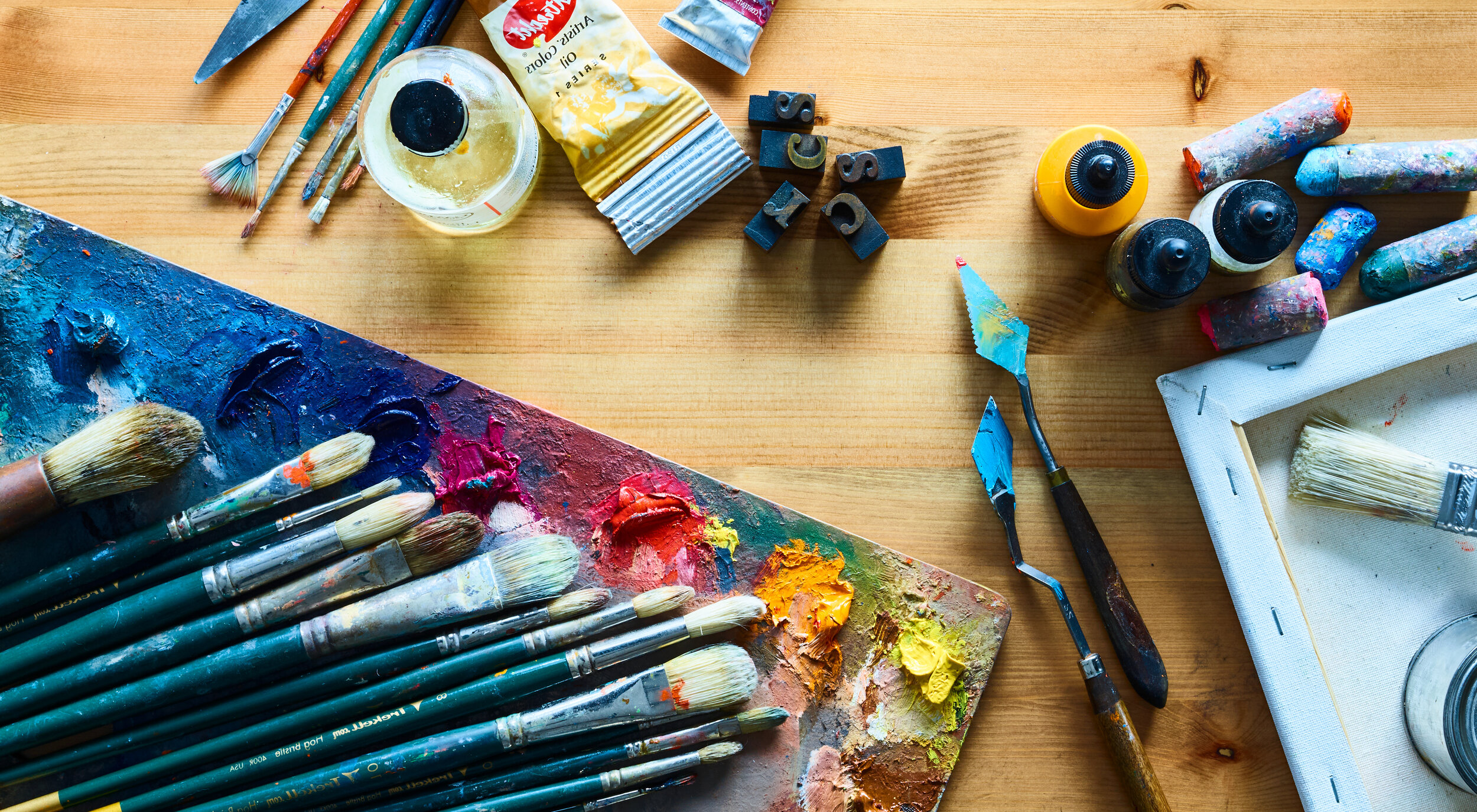
Children - Lesson 1: How to talk back to art
Child
Hi. We’ve had lessons on making art and more on studying art. Now, let’s figure out how to interpret it. Can you “read” an art work and decide what the artist wants to say? Create your own drawing or write a story based on a work that you’ve seen. We asked an artist to show you how she takes a story and turns it into a painting. She made a video for you to watch her process.
Adult/Teacher
Hello. The goal of this lesson and the four that follow in this unit are to help a child engage with art. It’s related to knowing its story, but it goes in an additional direction of opening a dialogue between artist and viewer. This introduction to Art Criticism will get the conversation started.
Interpreting Art
In a child’s development, drawing is a universal impulse. As we discuss in Create: Lesson A “How Does a Child Learn to Draw?”, before children acquire language and can speak, they can communicate through drawing. What kind of communication is it, though: Is it a monologue or a conversation?
We make a lot of art as children—most of us make less, unfortunately, as we age—but are we communicating about the art we see? Can we do it? Sometimes children struggle to articulate what their own art has to say. Over time, the deficit compounds, and we lose the ability to see art and talk about it. Let’s give children some tools to discuss the art of others.
This is the foundation of Art Criticism, but there’s nothing negative about this process, which is to look at visual things, think. and talk about them. This is the formula of interpretation.
The main goal is to sloooow down when we look at art. In their book, Teaching Drawing from Art, authors Brent Wilson, Al Hurwitz, and Marjorie Wilson write, “Most students have the habit of ‘speed reading’ drawings. And most drawings merit much more than the three or four seconds that they get from the casual viewer in a gallery or the peruser of a book of drawings. The redrawing from drawings is one way to make looking vastly more intricate and insightful, and talking and writing about drawings is another important way. Both of these activities may have reciprocal consequences, the student who can characterize in words the qualities of a fine drawing might also be able to achieve similar qualities in his or her own drawing. The student who can draw from qualities might also have some insightful things to say about them. But the connections are not automatic. In the drawing program both activities need continual encouragement and ‘cross-pollenization.’ Both are important means by which the meaning of drawings is developed.”[1]
Here are two great exercises to help children engage with art.
Redrawing. Select an art work or object in your home. Perhaps it is a sibling’s drawing, an object on display, or an art work hanging on your wall. Any art work or object will do. Ask the child to make his or her own version of the work as a drawing. Follow these three steps:
Ask the child some questions about the work such as, “What is this?” “What is it made out of?” and “What is the artist trying to communicate?”
Have the child interpret the work for themselves in a drawing using whatever materials they choose. Maybe they will transform it from one medium to another—a watercolor to a pencil drawing, a ceramic object to a crayon drawing—or they will change the point of view of the original in some way, as they make their version of it. Perhaps they will try to do as realistic a copy as they can. All are valid approaches.
When they are done, lead a discussion with the child by comparing the two works and talking about how they are the same and how they are different.
Writing. Find two works or objects that are similar—two drawings, two quilts, two paintings, etc., and lead a discussion with the child about the pair. If the child is too young to be able to write down responses, serve as a scribe to capture them yourself. The goal is to discover what makes the work tick. Here are some sample questions, starting with basic concepts and then becoming more advanced, as their capabilities allow:
Basic qualities. Which of the two works is most colorful, biggest, prettiest, most expressive, most elaborate, funniest, or interesting?
Complexity. Which of the two works probably took the longest to make? Which of them used their media—ink, paint, textile, etc.—the most creatively? If you were making your own version of these works, what would you add to it?
Reading. What do you think the art works are trying to say? What is going on in the works? Is one of them clearer in the way it communicates?
Preferences. Which of the works is the most spontaneous? Emotional? The hardest to understand? The most original? The most inspirational? The one that speaks the most to you?
These questions are only starting points. Follow up with additional questions and comments to elicit as many responses as you can. If the child is comfortable writing down these responses, encourage that; you could make your own list of responses and then compare them with the child.
How does an artist use ideas from texts
The conversation between viewer and artist can go back and forth. Another kind of discussion takes place when an artist finds inspiration from another art work or text.
We asked the artist Annie Poon to create a short video about the way that she uses her daily scripture study to inspire her art work. In this case, Doctrine and Covenants 88:63, “Draw near unto me and I will draw near unto you.”
[1] Teaching Drawing from Art, by Brent Wilson, Al Hurwitz, and Marjorie Wilson, Davis Publications, 1987, p. 187.

